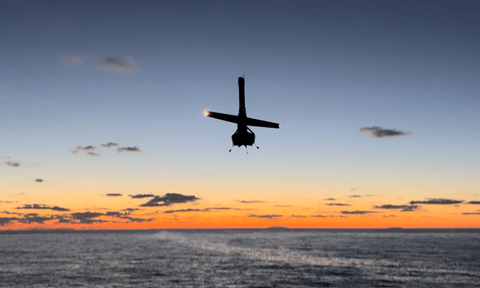According to the Japan Ministry of Defense’s 2025 Defense White Paper, the Japan Maritime Self-Defense Force (JMSDF) plans to acquire six “shipborne small UAVs” in the 2025 fiscal year, which ends on 31 March 2026.

While the white paper does not specify a platform, US firm Shield AI confirmed in early 2025 that its V-BAT UAV has been selected for operations from Japanese warships.
Beyond shipborne UAVs, Japan has already integrated substantial unmanned systems into its force structure. The Japan Air Self-Defense Force (JASDF) operates the Northrop Grumman RQ-4B Global Hawk for high-altitude surveillance, while the JMSDF flies the General Atomics MQ-9B SeaGuardian for maritime patrol missions.
The white paper also highlights a “mid-range UAV,” likely a reference to the Insitu ScanEagle, which has been deployed for intelligence, surveillance, and reconnaissance roles.
Tokyo plans to further expand its unmanned portfolio. It will procure a “small attack UAV” capable of engaging vehicles and other ground targets, likely in cooperation with other unmanned or manned platforms.
A “transport UAV” for logistics support is also under development. Mitsubishi Heavy Industries is leading the effort with a medium-sized drone capable of carrying 200kg (440lb) of cargo. In March, the system participated in a disaster relief drill delivering 72 bottles of water via winch.
Looking ahead, Japan will also develop an unmanned combat air vehicle (UCAV) as part of the Global Combat Air Programme (GCAP), a multinational initiative with the UK and Italy to field a sixth-generation fighter by 2035.
A loyal-wingman-style UCAV is expected to accompany the manned GCAP fighter, operating semi-autonomously to support missions ranging from strike to electronic warfare.
Artificial intelligence plays a central role in Japan’s unmanned roadmap. The white paper emphasizes AI’s importance in enabling UCAV autonomy. Tokyo is collaborating with the United States to study the technoloy’s use in future unmanned platforms.
Japan’s Acquisition, Technology & Logistics Agency (ATLA) confirms it is conducting tests with eight small UAVs delivered in 2025. The trials aim to explore coordination between crewed and uncrewed aircraft.
